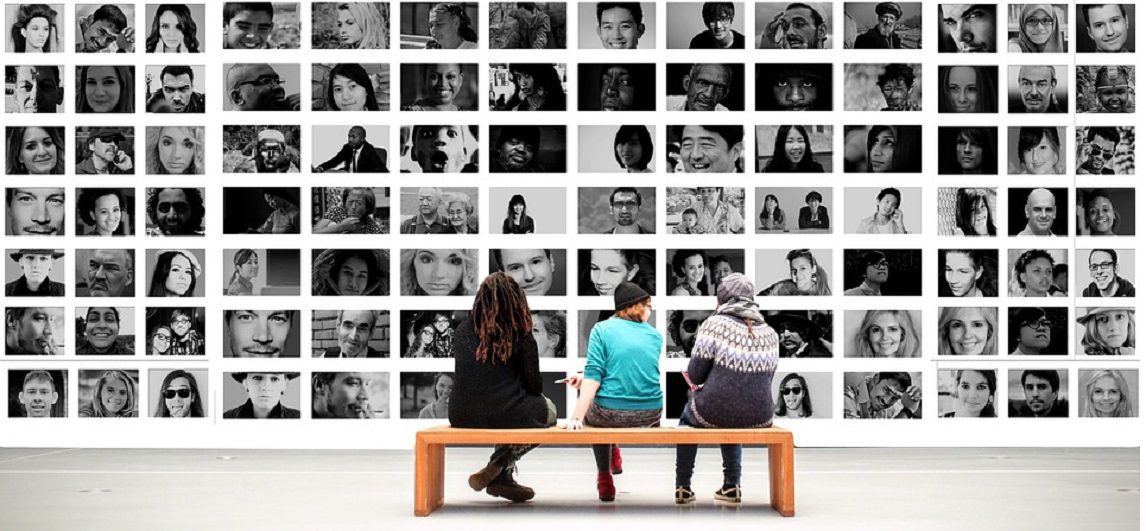by Orla Cruise, Senior Account Manager specialising in Employer Branding, Atomic DNA.
We work with multiple clients helping them shape their I&D strategies and how they can be communicated internally. One question that recently came up was around social class and how it might be considered when developing a holistic I&D strategy.
There has actually been some really good research done around the topic and it was very interesting to see the extent to which an employee fits in and achieves success within an organisation, depends largely on how their resources, connections and hidden rules mesh with the resources, connections and hidden rules of an organisation.
Why?
From an employer branding point of view, cognitive diversity is something that Millenials place high on their list when it comes to seeking employment. There is a huge desire for equality, representation and transparency in the world right now that, from an employer’s point of view, cannot be ignored.
Social class is something that applies to and affects everyone. There is a global trend in many economies right now, notably the UK and the US, where social class divides are becoming increasingly pronounced, so equipping your organisation with the awareness and tools to manage this social trend is more necessary than ever.
The Research.
The way we are raised can influence our opportunities greatly and determine the resources we develop that will either help us or hinder us later in life. We learn different rules and norms depending on our economic class, which determine how we view ourselves and everyone around us and how we use this information to survive. So what does survival mean depending on the class you’re in?
For the Working Class (WC), the primary goal is survival itself, with a strong focus on relationships and entertainment. Whereas for the Middle Class (MC), it is through achievement, work itself and one’s level of self-sufficiency. For the Upper Class (UC), it is through financial, political and social.
Home & School Life
For the MC & UC, when it comes to the way parents communicate, children are encouraged to share what they are thinking, how they are feeling, etc. from a very young age. For the WC, where the focus is more on survival, they use language that is more direct and in a more instructive form in order to reinforce the importance of being tough and obeying the rules.
When it comes to education, MC and UC schools tend to promote expressive ideas and have more resources; students are being prepared for career “freedom” – where they can do and be anything. For the WC, where access to resource can be limited due to funding, they are usually being prepared for blue collar jobs, so this expressive and “free” thinking is uncommon.
MC and UC often feel this expressive and “ask questions” environment is the only way to be a student, which can signal to WC students that they don’t belong there and are unlikely to be successful in the types of jobs that encourage that same behaviour.
In the Workplace
There are invisible elements of decision making and power that exist in the workplace that can discourage relatively WC people from even seeking positions of progression in the workplace. In order to get ahead, there are two types of behaviours: Prosocial and Political.
Prosocial behaviour manifests in the form of being competent, hard-working and a team player, while working in collaboration with your colleagues in a harmonious environment. Political behaviour is behaviour that is self-promoting, self-flattering and treating people around you as resources.
Those of a higher class are willing to engage in this behaviour and “play the game” in order to get ahead, whereas those of a lower class are less inclined to seek positions of power if the only way to get ahead is to carry out those behaviours.
When it comes to hiring into certain positions, HR managers expect job applicants to ask a lot of questions and express preferences, etc. Such are the qualities that suit the upper classes better, due to their home and school experiences where that behaviour was encouraged, as explored earlier.
Developing Strategies that Incorporate Social Class.
1 Connect Early with Talent
For the WC, as discussed earlier, many are prepped for certain blue collar jobs in society so they automatically rule any other possibilities out. Connect with schools and youth clubs at an early stage and highlight the type of organisation you are, the types of careers you cater for and your employment paths. Try to uncover if vocational routes can be a viable route into your company.
2 Access to Education
For much of the WC, third level education is simply not a viable option due to lack of money, location or time; many simply go straight to full-time work if they have a family to support. Remove any unnecessary educational criteria from the hiring process. It can often be seen as a barrier and it will also remove any unconscious bias of the hiring team. Look into creating internships where possible, so people can learn on the job.
3 Audit your Values
Make sure your values and behaviours are truly authentic and relevant, and avoid having aspiring values that don’t take into account the reality of the organisation.
4 Measuring Success
Take a look at how is success is measured in your organisation. Give people a sense of what it takes to progress and make sure you signal clearly what is expected, what is valued and what is celebrated.
5 The Hidden Rules
Who is setting the hidden rules and norms in the workplace? More often than not, it is managers from MC and UC backgrounds, and this can feed into the way workplace culture and interactions play out. These ‘rules’ need to be checked to ensure that everyone is on a level playing field.
As mentioned previously, Inclusion and Diversity is all about creating an organisation that belongs in the modern world. Taking this more holistic approach when it comes to your I&D strategies by looking beyond the “visible’ traits can be a huge step towards creating such organisations and really help strengthen your employer brand.
For more information on social class and how to incorporate it into your I&D strategies, visit this webinar on BrightTalk, run by Deepak Jas, from Girl Effect & Steven Huang, from Culture Amp.
About the author
Orla Cruise is a Senior Account Manager specialising in Employer Branding, at Atomic DNA. She has worked on various brands’ recruitment marketing & internal comms strategies, such as EY, Grant Thornton, Bank of Ireland and Aer Lingus.











































